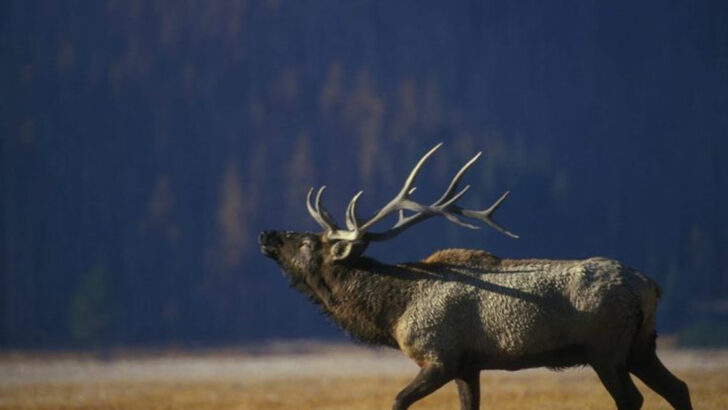Arkansas is a hidden gem for wildlife lovers, bursting with creatures you won’t find just anywhere. Beyond the well-known hiking trails and stunning views, this southern state is home to some of the most diverse and fascinating wildlife in the U.S.
From the majestic birds that glide over the Ozark Mountains to the elusive mammals that dart through dense forests, Arkansas is alive with nature. The state’s rich ecosystems offer the perfect sanctuary for a wide array of animals, each more captivating than the last.
Are you ready to uncover the untold wonders of Arkansas? Let’s explore 23 remarkable animals that make this state one of the best-kept secrets of the South. From rare sightings to everyday wonders, Arkansas is a haven for anyone looking to witness nature at its finest.
American Black Bear
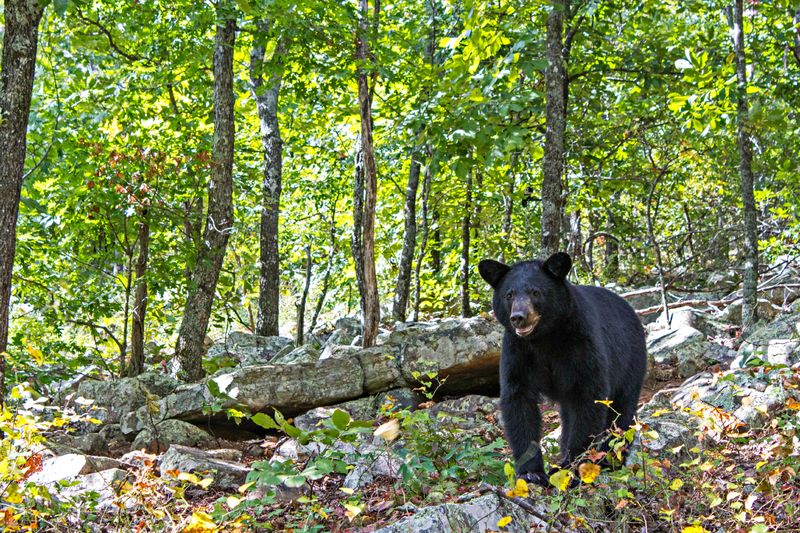
The American Black Bear is a symbol of wild Arkansas. These bears are typically found in the state’s dense forests, where they forage for berries, nuts, and small animals.
Observing them from a safe distance is a thrilling experience. In autumn, they prepare for hibernation by fattening up, showcasing their adaptability. Black bears, though imposing, are generally shy and avoid human interaction.
Arkansas has been successful in conservation efforts, allowing these bears to thrive. For wildlife enthusiasts, spotting a black bear is a highlight of exploring Arkansas’s natural areas.
Elk
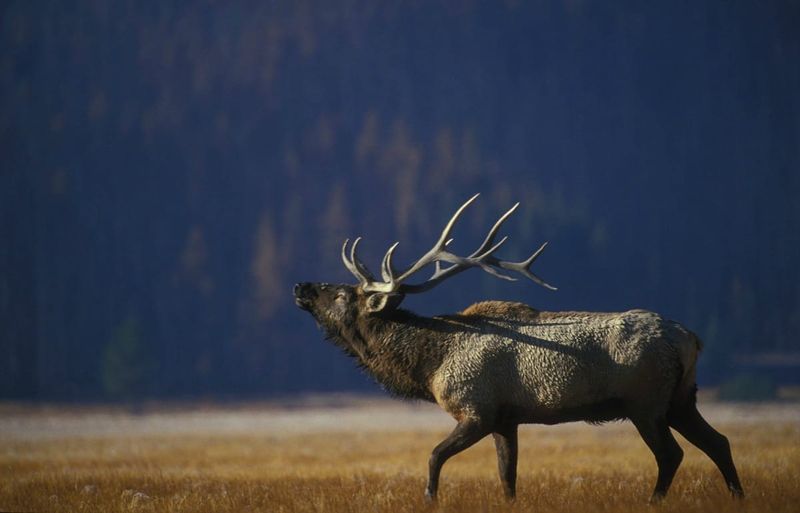
Elks in Arkansas are a sight to behold, especially in the Boxley Valley where they roam freely. These magnificent creatures, with their impressive antlers, attract photographers and visitors alike.
During the fall, the mating calls of bull elks echo through the valleys, a sound synonymous with Arkansas wilderness. Conservation programs have helped increase their numbers, making elk watching a popular activity.
For those venturing into the region, maintaining a respectful distance is crucial to appreciate these animals without disturbing their habitat. This balance enriches the experience of witnessing Arkansas’s wildlife.
Bald Eagle
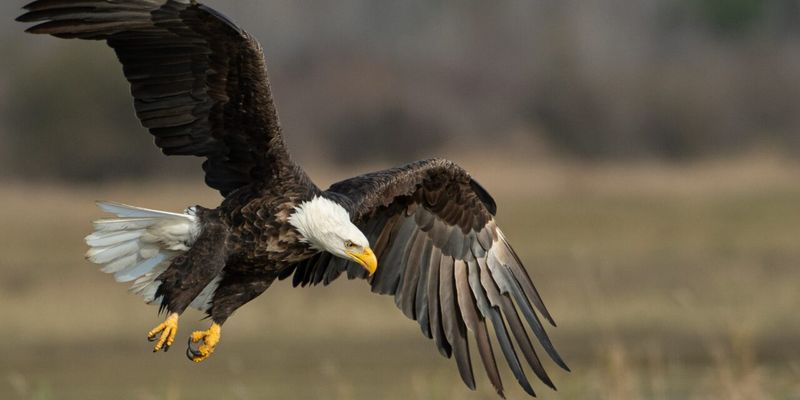
The Bald Eagle, America’s national bird, finds a perfect home in the serene landscapes of Arkansas. Sightings of these majestic birds are common near lakes and rivers, where they hunt for fish.
With their striking white heads and powerful wingspans, they symbolize freedom and strength. Winter months see an increase in their population, as they migrate to the area.
Birdwatchers flock to places like Lake Ouachita to catch a glimpse. Preserving their habitat has been key to ensuring that the skies of Arkansas continue to be graced by these noble eagles.
Eastern Collared Lizard
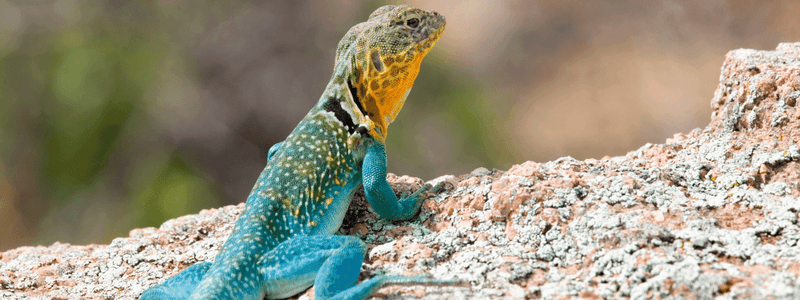
The Eastern Collared Lizard, known for its striking coloration and speed, inhabits the rocky outcrops of Arkansas. Its vivid hues of green and blue make it stand out against the arid backdrop.
Active during the day, these lizards are fascinating to watch as they scurry across sunlit rocks. They exhibit a unique behavior known as ‘bipedal running,’ where they sprint on their hind legs.
Conservationists study them to understand the delicate balance of their ecosystem. For reptile enthusiasts, encountering an Eastern Collared Lizard is a thrilling part of an Arkansas adventure.
Alligator Snapping Turtle
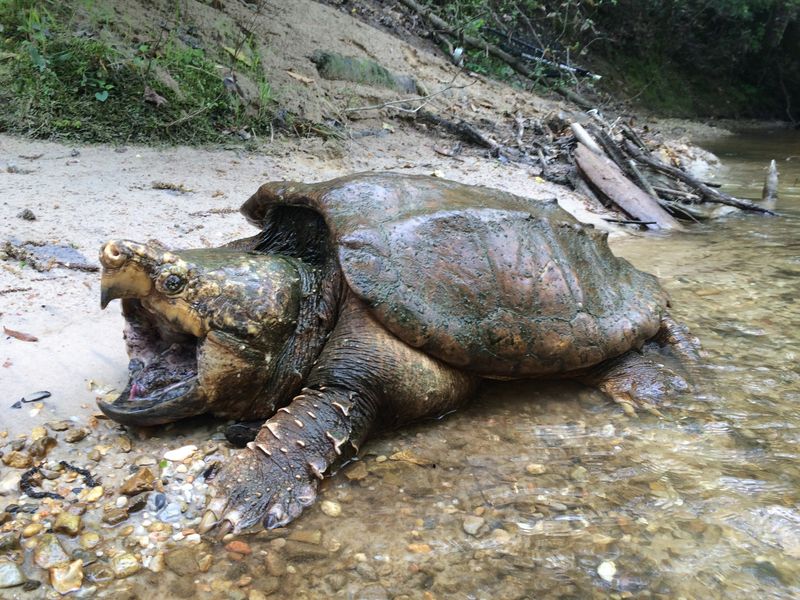
Alligator Snapping Turtles, with their prehistoric appearance, are among the most intriguing reptiles in Arkansas. These turtles inhabit the murky waters of swamps and rivers, where they lie in wait for prey.
Their powerful jaws and long lifespan make them fascinating subjects of study. Despite their fearsome look, they play a crucial role in their ecosystem by controlling fish populations.
While they are a sight to behold, it’s crucial to respect their space due to their strength. Observing these turtles in their natural habitat offers insight into the ancient world of reptiles.
Ozark Cavefish
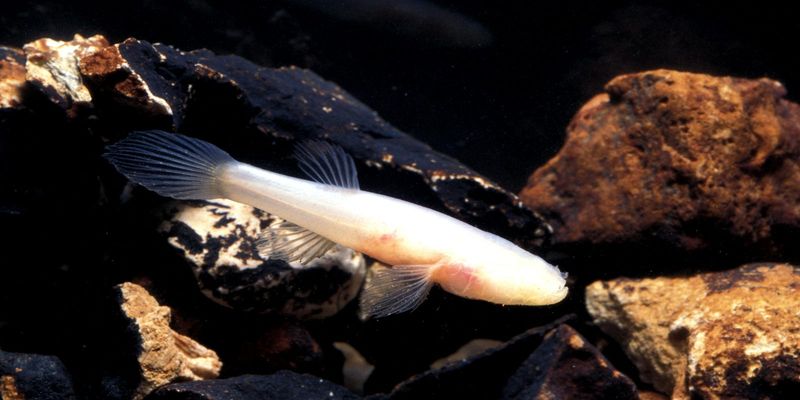
The Ozark Cavefish is a rare, blind fish that resides in the dark, subterranean waters of Arkansas caves. This species is specially adapted to its lightless environment, with a translucent body and heightened senses.
It feeds on small aquatic invertebrates, playing a vital role in its niche ecosystem. Observing these fish requires patience and respect for their fragile habitat. Conservation efforts are critical, as they face threats from water pollution and habitat disruption.
For those lucky enough to see them, the Ozark Cavefish offers a glimpse into a hidden, mysterious world.
Northern Mockingbird
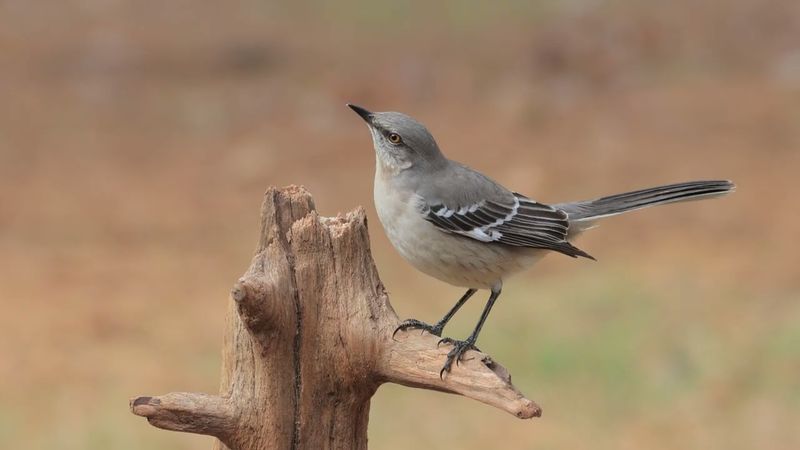
The Northern Mockingbird, known for its impressive vocal mimicry, is a common sight in Arkansas’s gardens and parks. These birds are celebrated for their ability to imitate the calls of other bird species, adding a musical diversity to their surroundings.
Active and curious, they often perch conspicuously on branches, scanning the area. Mockingbirds are territorial, defending their space vigorously against intruders.
Their presence signals a healthy environment, as they thrive in diverse habitats. For bird lovers, the melodic calls of the Northern Mockingbird are a delightful soundtrack to Arkansas’s outdoor adventures.
Ouachita Dusky Salamander
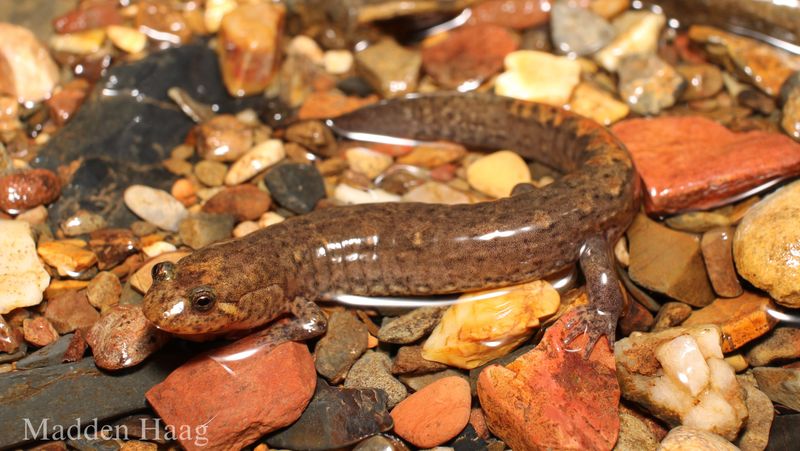
The Ouachita Dusky Salamander is a small, elusive amphibian found in the moist forest floors of Arkansas. This salamander’s dark coloration helps it blend into its damp, leafy environment.
They are most active at night, searching for insects and worms. Their presence is an indicator of a healthy, undisturbed ecosystem. Conservationists monitor their populations as part of broader habitat preservation efforts.
For those exploring Arkansas’s forests, encountering a Dusky Salamander is a reminder of the intricate web of life that thrives in these rejuvenating landscapes. It exemplifies nature’s subtle beauty.
Red Fox
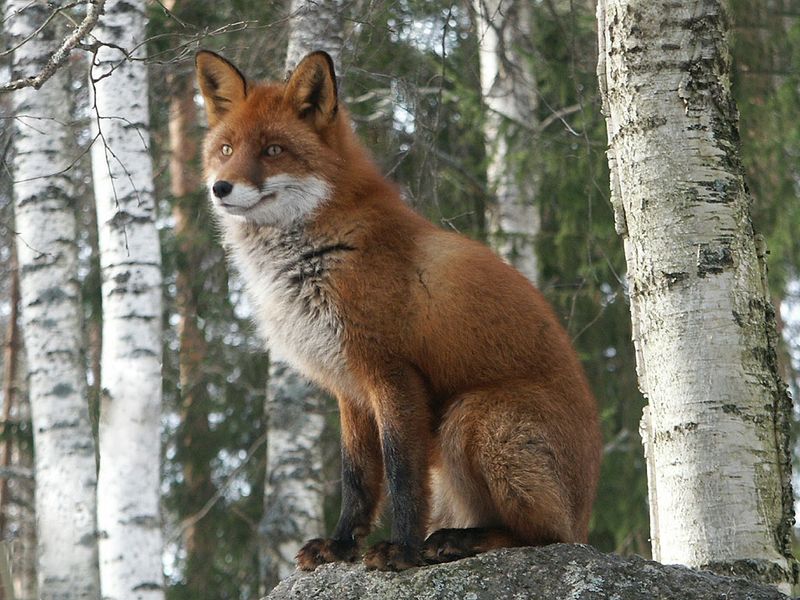
The Red Fox, with its fiery coat and cunning demeanor, is a captivating creature found throughout Arkansas. These foxes are highly adaptable, thriving in woodlands, prairies, and urban areas.
They are primarily nocturnal but can be seen during the day hunting for rodents and birds. Known for their intelligence, red foxes use a variety of vocalizations to communicate.
Observers often spot them playfully chasing each other during mating season. For those lucky enough to encounter a Red Fox, it offers a peek into the intriguing world of Arkansas’s adaptable wildlife.
White-tailed Deer
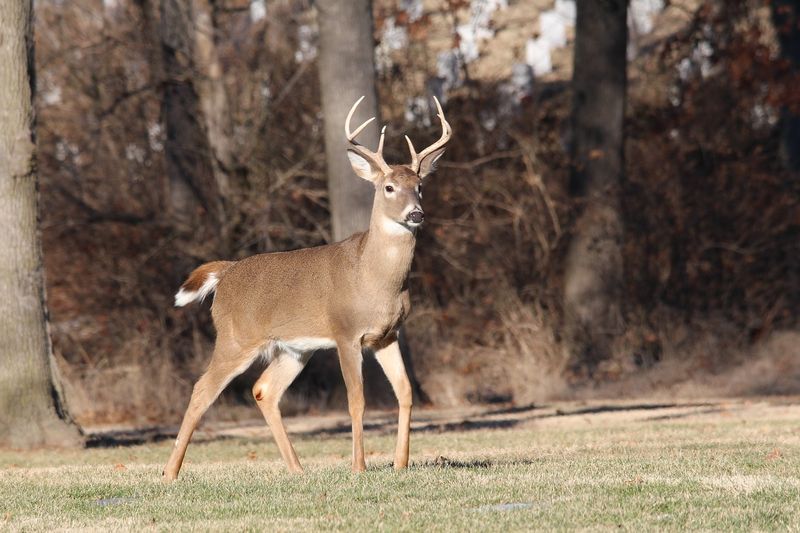
White-tailed Deer are among the most recognizable wildlife in Arkansas, often seen grazing in fields and forests. These elegant animals are known for their distinctive white tail, which they raise as a warning signal.
They are most active during dawn and dusk, making these times ideal for wildlife viewing. Deer play a crucial role in their ecosystem, influencing vegetation patterns through their grazing habits.
Hunters and wildlife enthusiasts alike appreciate the presence of White-tailed Deer, which have adapted well to both wild and suburban environments. Their presence enriches Arkansas’s natural heritage.
American Alligator
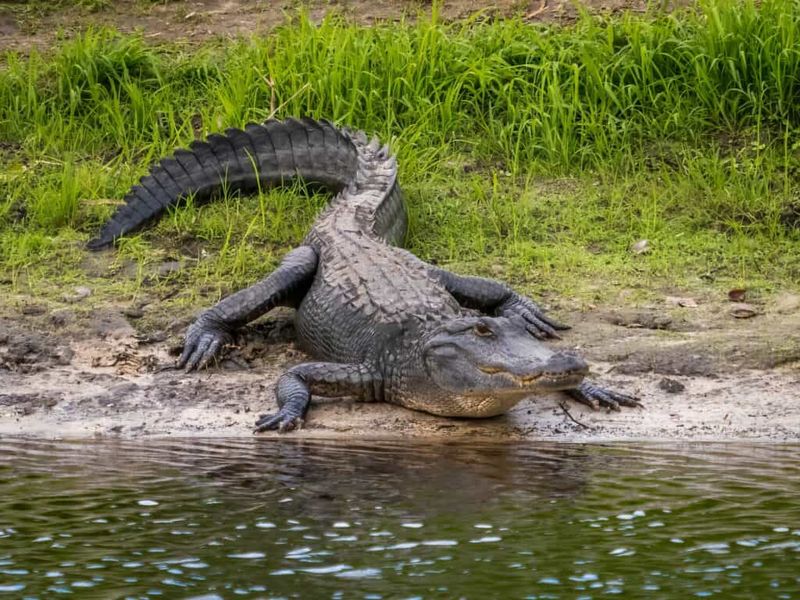
The American Alligator is a powerful symbol of southern wetlands, including those in Arkansas. These reptiles thrive in swamps, rivers, and lakes, where they are top predators.
Alligators are fascinating to observe, especially when they silently glide through the water. They play an essential role in maintaining the balance of their ecosystem by controlling prey populations.
Despite their fearsome reputation, attacks on humans are rare, and they generally avoid contact. For those exploring Arkansas’s wetland areas, alligators provide a thrilling glimpse into the state’s aquatic wildlife.
Peregrine Falcon

The Peregrine Falcon, renowned for its speed, is a stunning bird of prey found in Arkansas. Known for their incredible hunting dives, they are the fastest animals on the planet.
These raptors thrive in diverse habitats, including cliffs and urban areas, where they hunt pigeons and other birds. Their presence is a testament to Arkansas’s rich avian diversity.
Conservation efforts have helped their populations rebound after declines due to pesticide use. Observing a Peregrine Falcon in action is a breathtaking experience, showcasing the raw power and grace of Arkansas’s skies.
Gray Bat
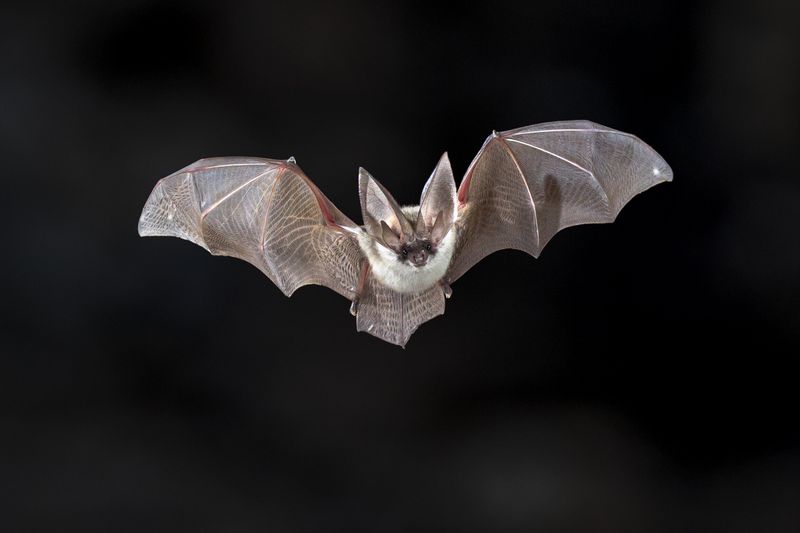
Gray Bats are an essential part of Arkansas’s cave ecosystems, often forming large colonies in limestone caves. These bats are crucial for insect control, consuming vast numbers of pests each night.
They rely on specific cave environments for roosting and breeding, making them sensitive to habitat disturbances. Efforts to protect their habitats have been vital to their survival.
Watching these bats emerge at dusk is a spectacle of nature’s rhythms. For those interested in the hidden corners of Arkansas’s wildlife, Gray Bats offer a fascinating glimpse into nocturnal life.
Wild Turkey
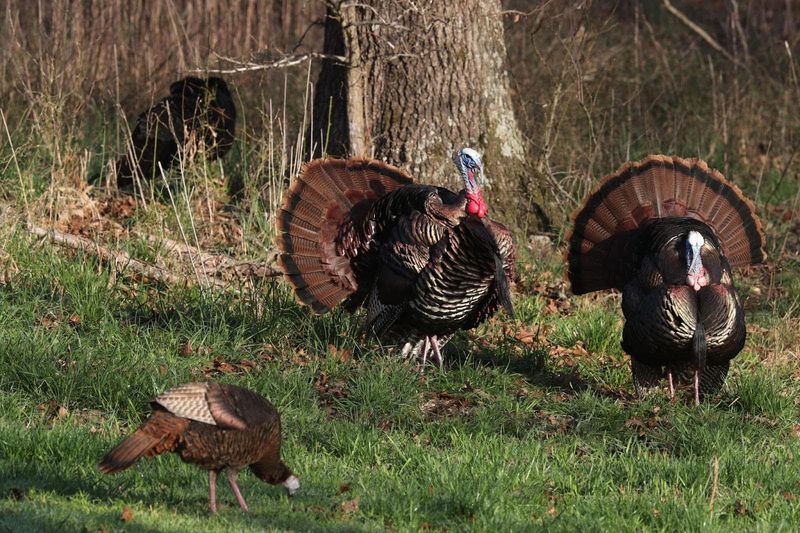
Wild Turkeys are a staple of Arkansas’s wildlife, often seen foraging in fields and forests. These birds are known for their iridescent plumage and distinctive gobbling calls, especially during mating season.
Turkeys are social creatures, often moving in flocks. Their presence indicates a rich ecosystem, as they need diverse habitats for feeding and nesting. Hunters and bird watchers alike are captivated by their behaviors and plumage.
Exploring Arkansas’s landscapes provides ample opportunities to observe these fascinating birds, reflecting the state’s commitment to wildlife conservation and natural heritage preservation.
Nine-Banded Armadillo
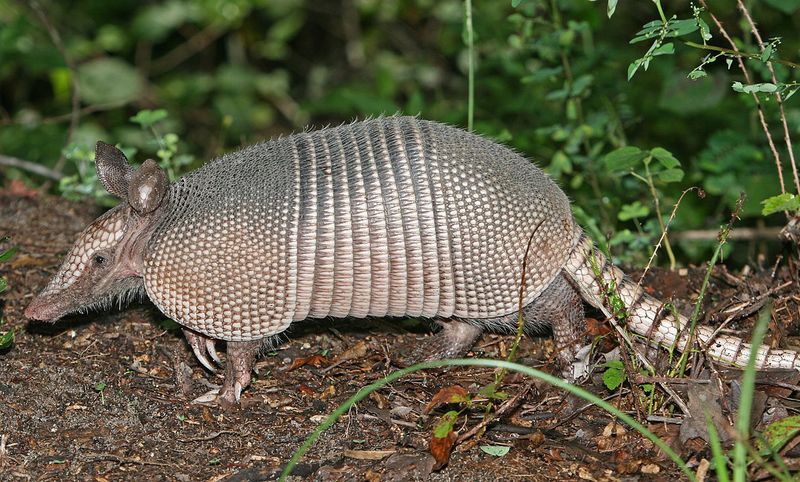
The Nine-Banded Armadillo is a quirky creature that has made its home in Arkansas. Recognizable by its armored shell, it forages for insects and grubs, primarily at night. Armadillos are skilled diggers, using their claws to burrow and find food.
Their presence is a testament to Arkansas’s diverse habitats, ranging from forests to grasslands. While not native to the state, they have adapted well, providing unique viewing opportunities for wildlife enthusiasts.
Spotting an armadillo is a reminder of the adaptability and resilience of nature, even in unexpected forms.
Red-eared Slider Turtle
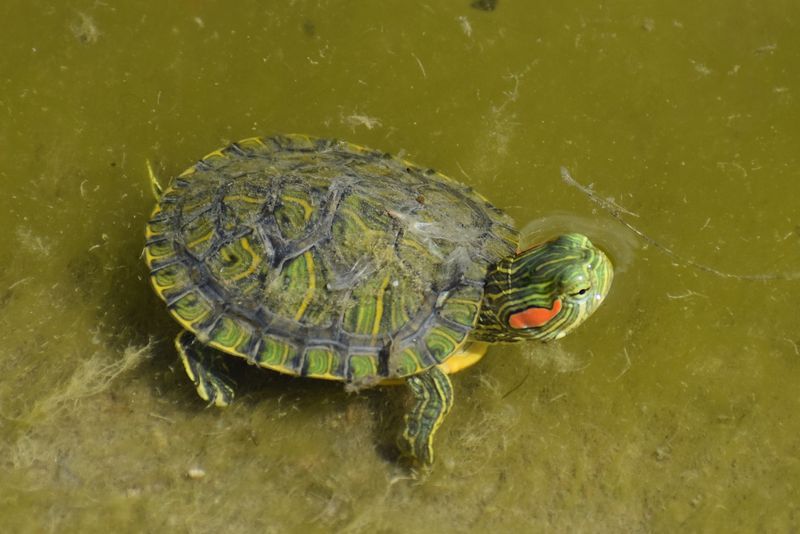
Red-eared Slider Turtles are common in Arkansas’s aquatic environments, often seen basking on logs and rocks. Known for the red patch behind each eye, they thrive in ponds, lakes, and rivers.
These turtles are omnivorous, feeding on aquatic vegetation, insects, and small fish. Their adaptability has made them popular in the pet trade, though they require careful management.
In the wild, they play a role in maintaining the balance of their ecosystems. Observing these turtles in their natural habitat is a peaceful experience, reflecting the serene beauty of Arkansas’s waterways.
Pileated Woodpecker
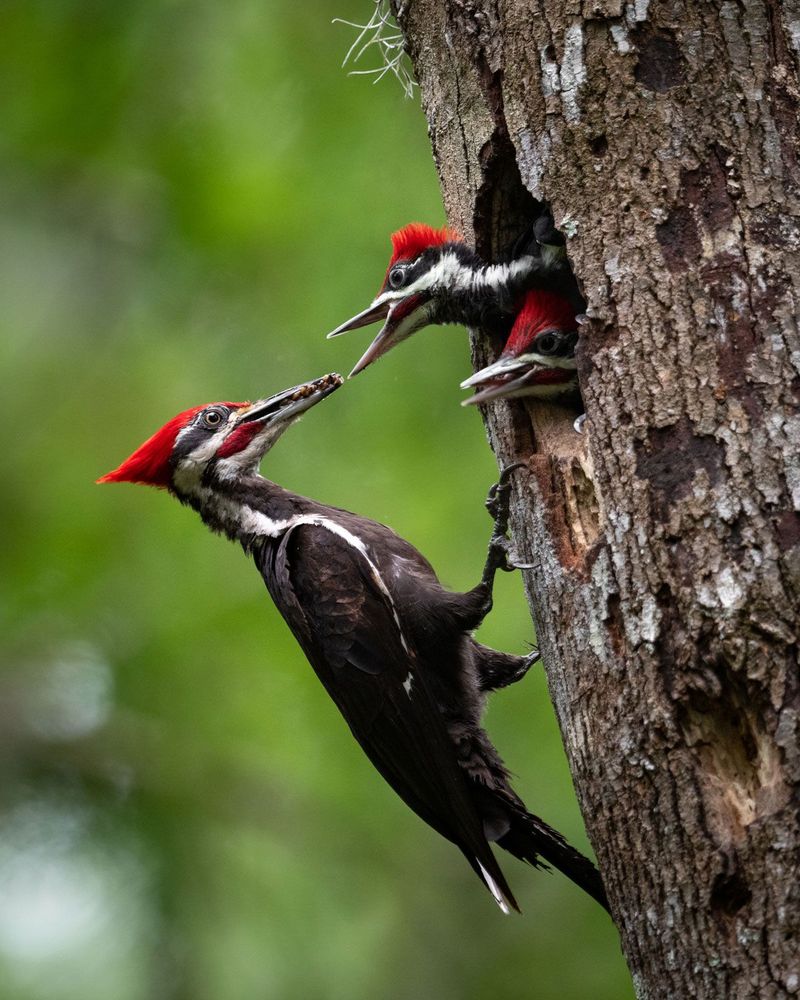
The Pileated Woodpecker is a striking bird, known for its vibrant red crest and distinctive drumming sounds. Found in the forests of Arkansas, these birds excavate large holes in trees to find insects and create nesting sites.
Their presence benefits other wildlife, as the cavities they leave behind provide homes for many species. Observing a Pileated Woodpecker in action is a testament to the dynamic life in Arkansas’s woodlands.
Birdwatchers treasure these sightings, which contribute to the rich tapestry of the state’s avian community. Their rhythmic drumming is a signature sound of the forest.
Copperhead Snake
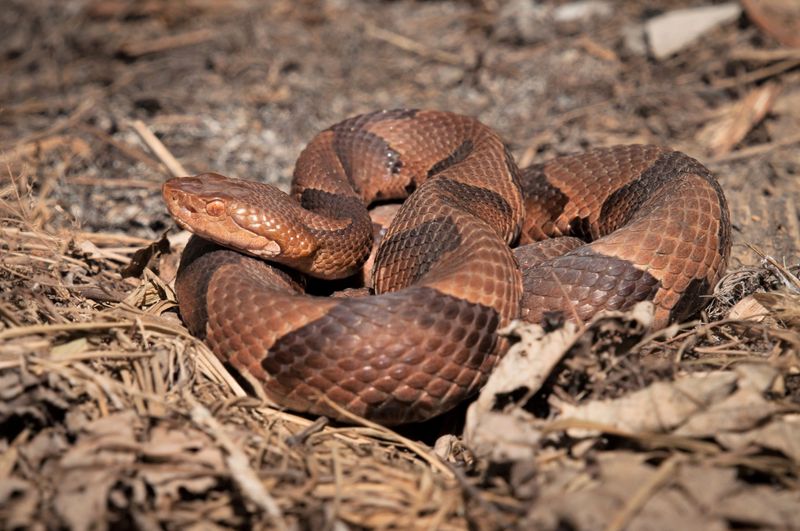
The Copperhead Snake, with its distinctive coppery hue, is a common reptile in Arkansas. Known for its excellent camouflage, it blends seamlessly into the forest floor. These snakes are generally non-aggressive, biting only in self-defense.
They play a crucial role in controlling rodent populations. Hiking through Arkansas’s forests requires awareness, as Copperheads often bask in the sun on trails.
For those who respect their space, these snakes offer a glimpse into the balance of nature, where each species plays a part. Their presence underscores the diversity of the state’s reptile population.
Eastern Bluebird
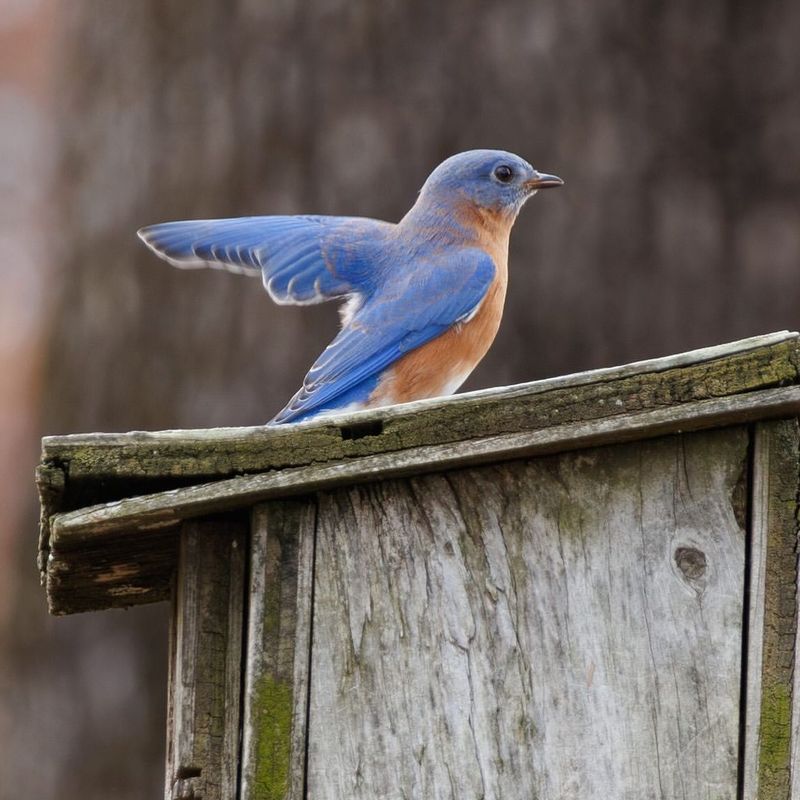
Eastern Bluebirds are cherished symbols of happiness and renewal in Arkansas. These vibrant birds prefer open fields and meadows, where they feed on insects and berries. Their bright blue coloration and sweet songs make them favorites among birdwatchers.
Bluebirds nest in tree cavities or specially designed boxes, which conservationists encourage to support their populations. Observing these birds is a joyful experience, offering a connection to the tranquil beauty of Arkansas’s countryside.
Their presence signifies a healthy ecosystem, and efforts to protect their habitats ensure that future generations will enjoy their cheerful melodies.
Coyote
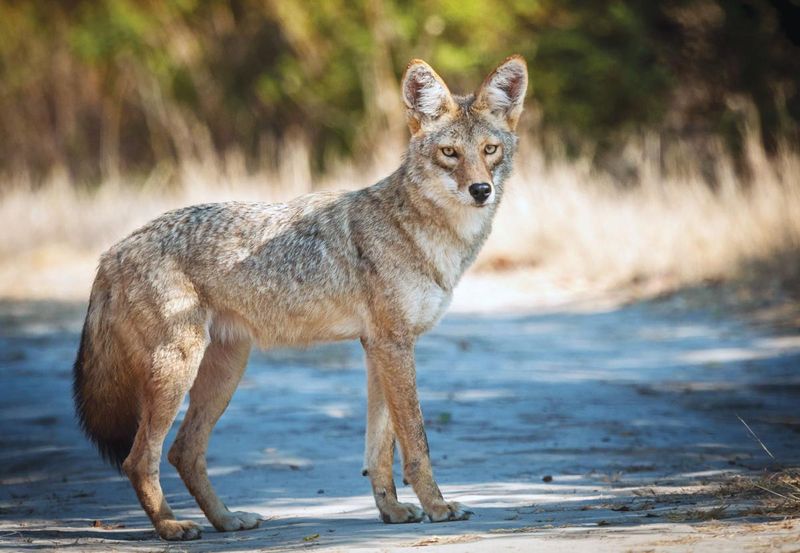
Coyotes are adaptable predators found throughout Arkansas, known for their keen intelligence and resourcefulness. These animals hunt alone or in packs, feeding on rodents, birds, and even fruits.
Their distinctive howl is a familiar sound, echoing through the state’s wilderness areas. Coyotes play a vital role in maintaining ecological balance by controlling various animal populations.
While they sometimes venture into urban environments, they are primarily creatures of the wild. For those exploring Arkansas, hearing a coyote’s call is a reminder of the untamed beauty that still thrives in the state’s landscapes.
Great Blue Heron
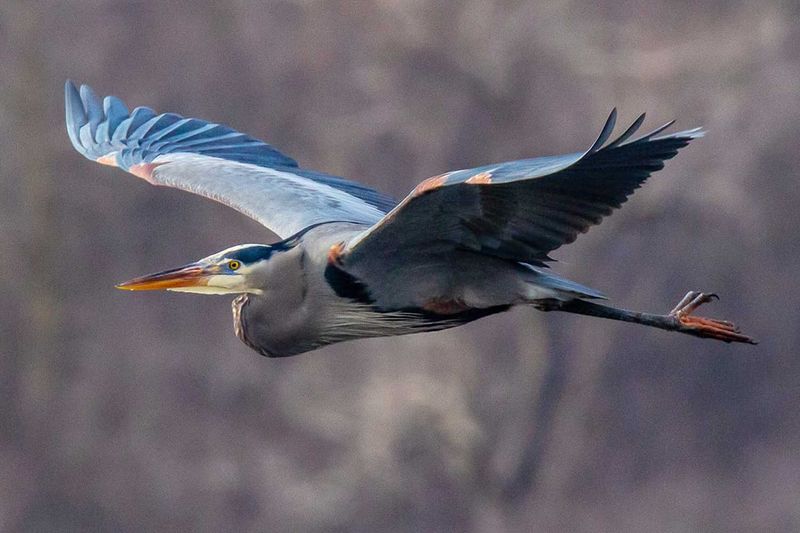
The Great Blue Heron is a striking presence in Arkansas’s wetlands, known for its long neck, legs, and graceful demeanor. These birds can often be spotted standing still near water, waiting patiently to catch fish or frogs.
Their impressive wingspan and steady flight are a treat to watch. Herons are solitary hunters but can be seen nesting in colonies. Their presence in wetlands is a sign of ecological health, as they rely on abundant aquatic life.
Observing a Great Blue Heron is a peaceful experience, reflecting the serene charm of Arkansas’s natural environments.
Bobcat
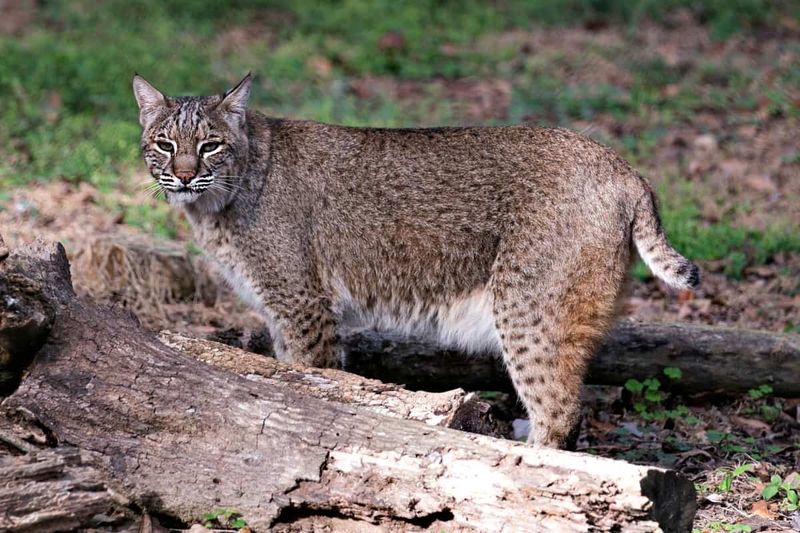
The elusive Bobcat is a master of stealth in the forests of Arkansas. Known for its tufted ears and spotted coat, it is a skilled predator that hunts rabbits, birds, and rodents.
Bobcats are primarily nocturnal, making sightings a rare treat. They are solitary animals, marking their territory with scent and visual signals. The presence of bobcats is a sign of a healthy ecosystem, as they require large territories and diverse prey.
For those fortunate enough to spot one, it offers a thrilling glimpse into the wild heart of Arkansas. Their secretive nature adds to the mystique of the state’s wilderness.
Swamp Rabbit
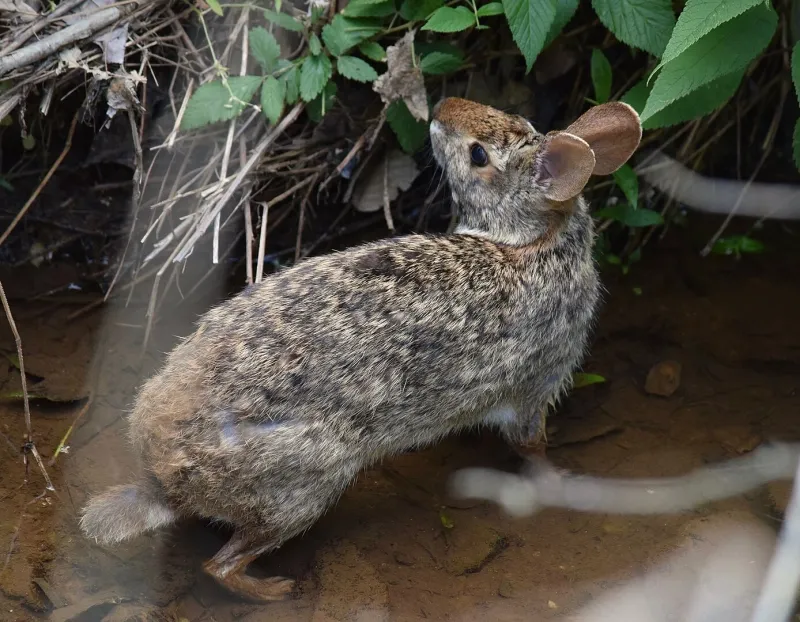
The Swamp Rabbit is a sizeable rabbit species that inhabits the wetland areas of Arkansas. Known for their strong swimming ability, these rabbits are well-adapted to their swampy homes, where they navigate the water with ease.
They are nocturnal feeders, emerging at dusk to forage for grasses and sedges, and their droppings often dot the trails in their habitat. The Swamp Rabbit’s ability to thrive in such environments underscores the diverse wildlife present in Arkansas’s wetlands.
These rabbits play a crucial role in their ecosystem, contributing to the health of the plant communities they inhabit.

